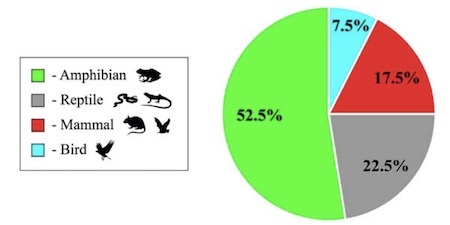Marc Abrahams's Blog, page 149
May 9, 2019
Dog-to-dog technology-mediated interactions [new study]
Dr Ilyena Hirskyj-Douglas is a Postdoctoral Researcher in Human-Computer Interaction (HCI) at Aalto University, Espoo, Finland, and specializes (amongst other things) “in building animal-driven technologies to explore what it means to interact as an animal (a non-human one) and how as system designers we can support this interaction.” She points out that :
“As a 2018 PDSA PAW report (a study of animals in the UK) suggests, out of 8.9 million dogs in the UK, 2.1 million were left alone in their owner’s home for quite considerable lengths of time. This is not always progressive towards a dog’s social welfare, which without being able to socialize may be inclined towards more negative and problem behaviors.”
Perhaps if they (i.e. dogs) could contact each other via the internet, their situation might improve? If so, what might dog-to-dog technology-mediated interactions actually look like?
Such things are explored in a paper for the 2019 CHI Conference on Human Factors in Computing Systems Proceedings (CHI 2019), May 4–9, 2019, Glasgow, Scotland, UK.
See: On the Internet, Nobody Knows You’re a Dog… Unless You’re Another Dog.
Research research by Martin Gardiner

May 8, 2019
Vertebrates in the Vegetable Package, in the News
Humans are more omnivorous than some of us realize, sometimes, suggests this new study:
“There’s a Frog in My Salad! A Review of Online Media Coverage for Wild Vertebrates Found in Prepackaged Produce in the United States,” Daniel F. Hughes, Michelle L. Green, Jonathan K. Warner, and Paul C. Davidson, Science of the Total Environment, vol. 675, July 20, 2019, pp. 1-12. (Thanks to Peter Uetz for bringing this to our attention.)
This animal pie chart summarizes the data visually:
The authors, at the University of Illinois Urbana-Champaign, the University of South Florida Saint Petersburg, and the Texas Parks and Wildlife Department, report:
Prepackaged leafy green vegetables represent one of the fastest growing segments of the fresh-produce industry in the United States. Several steps in the production process have been mechanized to meet the downstream demand for prebagged lettuces. The growth in this market, however, has come with drawbacks, and chief among them are consumers finding wild animals in prepackaged crops…. [We reviewed] online media coverage of wild vertebrates found in prepackaged produce items by customers in the United States…. Most incidents involved amphibians (52.5%) and reptiles (22.5%), while fewer contained mammals (17.5%) and birds (7.5%). Frogs and toads made up all of the amphibian-related incidents, with more than 60% comprising small-bodied treefrogs found in various types of fresh leafy greens. At least seven incidents involved Pacific Treefrogs (Hyliola regilla) and three comprised Green Anoles (Anolis carolinensis). One lizard and nine frogs were found alive, and at least two frogs were released into non-native areas….
We also found numerous instances of invertebrate biodiversity found in prepackaged crops (e.g., a live scorpion found in bagged spinach, and pending a thorough review, these may in fact outnumber the vertebrate cases.

May 7, 2019
2019 Ig Nobel EuroTour: Thanks!
A big thank you to everyone and everything who (or that) came to, helped organize, or otherwise was part of the 2019 Ig Nobel EuroTour.
It all happened in six weeks, in ten countries: Scotland, England, Austria, The Czech Republic, Switzerland, The Netherlands, Poland, Italy, Sweden, Norway, Germany, and Italy (again). Several of the events were webcast, including the big show at Imperial College London:
Here’s a list of all (or at least most) of the 2019 Ig Nobel EuroTour events:
March 9, Saturday, 1:00 pm—Science Discovery Day, University of St. Andrews, Scotland, in the Physics and Astronomy Building, the North Haugh — Marc Abrahams , with
Ig Nobel Prize winner Charles Paxton (Courtship behaviour of ostriches towards humans under farming conditions in Britain)
Scottish premiere performance of the chorus-enhanced version of William Topaz McGonagall ‘s disastrous poem “The Tay Bridge Disaster”
March 11, Monday—Prison visit.
March 13, Wednesday—University of Manchester, UK—Simon Building, Brunswick St, on the corner with Oxford Road)— Marc Abrahams will do 2 events [UPDATE: Here’s a report about the two events]:
2 pm, in room Room 2.60—Workshop [for MRC doctoral students] about “how to decide what is important and what’s not, and what’s real and what not”
4 pm, in Lecture Theatre B—A talk [open to everyone] about “Improbable Research and the Ig Nobel Prizes“, preceded by tea, coffee, and cake at 3:30). TICKETS TICKETS TICKETS are free (but limited in number).
March 16, Saturday, 3:00 pm—Imperial College London, UK, in the Great Hall—This is the first half of a special double-event day, together with BAHFest London (BAHFest begins at 7:00 pm). TICKETS TICKETS TICKETS are on sale; there is the option to purchase tickets for both events, or for just one.]— Marc Abrahams and
Ig Nobel Prize winner James Heathcote (Why do old men have big ears?)
Ig Nobel Prize winners Alex Garcia-Faura (Vagina music, for fetuses)
Robert Ewers (Boring Speakers Talk for Longer)
Ig Nobel Prize winner James Cole (Nutritional value of human cannibalism)
Andrew George (British premiere performance of the chorus-enhanced version of William Topaz McGonagall ‘s ‘disastrous poem “The Tay Bridge Disaster”), with Ig Nobel Prize winner Chris McManus (Scrotal asymmetry in man and in ancient sculpture), Marnie Chesterton , Zach Weinersmith , Stevyn Colgan , members of the London Sea Shanty Collective , and other stars
March 19, Tuesday, 6:00 pm—University of Graz, Austria, at —TICKETS TICKETS TICKETS—Marc Abrahams and
Ig Nobel Prize winner Minna Lyons (Comparison of psychopathic traits in night owls versus early risers)
Ig Nobel Prize winner Hynek Burda (Free-roaming dogs, when urinating, align themselves with earth’s magnetic lines)
Ig Nobel Prize winner Stephan Bolliger (Is it better to be hit on the head with a full bottle of beer, or a with an empty bottle of beer?)
March 20, Wednesday, 5:00 pm—Ig Nobel Talk, hosted by Sisyfos, Prague, The Czech Republic, at the Czech Academy of Sciences— Marc Abrahams will talk about the Ig Nobel Prizes and Improbable Research.
March 25, Monday, 6:00 pm—EPFL, Lausanne, Switzerland, in the Rolex Forum—This is part of EPFL’s 50th anniversary celebration! TICKETS TICKETS TICKETS . [PREVIEW] “Cats and Locusts and Star Wars and ‘Huh?’ and Claire and Mark and Marc and Marc, on Monday, in Lausanne”— Marc Abrahams and
Ig Nobel Prize winner Claire Rind (Monitoring a brain cell of a locust while that locust watches selected highlights from the movie Star Wars)
Ig Nobel Prize winner Marc Fardin (Can a cat be both a solid and a liquid?)
[Bad weather, and the susequent grounding of aircraft, prevented one speaker from attending: Ig Nobel Prize winner Mark Dingemanse (The word “huh?” seems to exist in every human language) was stuck at the airport in Amsterdam. Science journalist Pierre Barthélémy came to the rescue, doing an impromptu talk, in French, about Ig Nobel Prize-winning research he has written about in Le Monde.]
March 28, Thursday, 7:30 pm—The Value of Improbable Research: An Ig Nobel Evening, Nijmegen, The Netherlands, at De Lindenberg — TICKETS TICKETS TICKETS are available. Marc Abrahams and
Ig Nobel Prize winner Mark Dingemanse (The word “huh?” seems to exist in every human language)
Ig Nobel Prize winner Nadia Dominici (People can run across the surface of a pond, if that pond is on the moon)
Ig Nobel Prize winner Kees Moeliker (Homosexual necrophilia in the mallard duck)
A philosophical round of questioning led by Lisa Doeland
April 1, Monday, 6:00 pm—Copernicus Science Centre, Warsaw, Poland— Marc Abrahams and Ig Nobel Prize winner Kees Moeliker (Homosexual necrophilia in the mallard duck).
April 3, Wednesday, 4:30 pm—University of Catania, Italy—at
CSFNSM – Centro Siciliano di Fisica Nucleare e Struttura della Materia, via S. Sofia 64— Marc Abrahams will talk about the Ig Nobel Prizes and Improbable Research. [PREVIEW] Confirmed rumor has it that the winners of the 2010 Ig Nobel prize for management will be at the event.
April 9, Tuesday, 3:00 pm—Karolinska Institute, Stockholm, Sweden, in the Biomedicum lecture hall—FREE ADMISSION, OPEN TO THE PUBLIC—[PREVIEW]— Marc Abrahams and
Ig Nobel Prize winner Len Fisher (the optimal way to dunk a biscuit)
Ig Nobel Prize winner James Cole (Nutritional value of human cannibalism)
Ig Nobel Prize winners Peter Witzgall, Erika Wallin, Marie Bengtsson (detecting, by smell, the presence of a single fly in a glass of wine)
April 10, Wednesday, 3:00 pm—University of Stockholm, Sweden, in the Alba Nova—FREE ADMISSION, OPEN TO THE PUBLIC—[PREVIEW, PREVIEW]—This event will be livestreamed on Stockholm Univ’s Facebook page—Marc Abrahams and
Ig Nobel Prize winner Len Fisher (the optimal way to dunk a biscuit)
Ig Nobel Prize winner James Cole (Nutritional value of human cannibalism)
Ig Nobel Prize winners Paul Becher, Erika Wallin, Erik Hedenström (detecting, by smell, the presence of a single fly in a glass of wine)
The 24/7 Lectures by: Ragnhild Lunnan, Jonas Sellberg, Rezan Güler, Sara Strandberg
A human-endurance demonstration by Max Kesselberg
April 11, Thursday, 2:00 pm—University of Oslo, Norway, at Kristine Bonnevies Hus, Auditorium 3—”A truly intriguing talk with Marc Abrahams“
April 12, Friday, 8:00 pm—Ig Nobel Night in Berlin—Tempodrom, Berlin, Germany— Marc Abrahams , with special guest celebrity forensic entomologist Mark Benecke (analysis of some forensic-science-related Ig Nobel Prize winners). TICKETS TICKETS TICKETS are now on sale. [Some background, about the Ig Nobel Prizes.] [PREVIEW in Die Zeit ], PREVIEW in Der Tagesspiegel ]
April 16, Tuesday, 6:00 pm—Perugia, Italy—at POST , Via del Melo, 34— Marc Abrahams will talk about the Ig Nobel Prizes and Improbable Research. This event will be livestreamed on Facebook.
You can read about, see, or hear bits and pieces of the tour, in some of the clips on our press clips page.
Next year (2020)’s Ig Nobel EuroTour
We will soon begin organizing the 2020 Ig Nobel EuroTour. If your institution would like to host an event, please get in touch with us!

May 6, 2019
The Times They Are A-Changing: TV crews and computer shots
The TV crew that visited today to interview me did something different—something that may mark the end of an era. This was, perhaps, the first TV crew that did NOT ask to film me typing at a computer.

Maybe the trope of “science writer typing on a computer” is no longer assumed to be exotically evocative. Maybe.

Testing receptivity to pseudo-profound bullshit [new study]
The 2016 Ig Nobel Peace Prize was awarded to Gordon Pennycook, James Allan Cheyne, Nathaniel Barr, Derek Koehler, and Jonathan Fugelsang for their scholarly study called “On the Reception and Detection of Pseudo-Profound Bullshit”. Reference: “On the Reception and Detection of Pseudo-Profound Bullshit” in Judgment and Decision Making, Vol. 10, No. 6, November 2015, pp. 549–563.
Since the publication of the paper, research in the Pseudo-Profound Bullshit (PPBS) field has continued, some might say flourished. And now, as of 2019, a set of tests have been developed by a research team from the University of Waterloo, Canada, which might help distinguish between those individuals who tend to be ‘receptive’ to PPBS and those tend not to be. Bearing in mind that :
“Like other irrational beliefs, bullshit is a real, prevalent, and consequential phenomenon. Due to this prevalence and potential for harm, the ability to recognize and avoid bullshit is an essential skill to have in today’s world.”
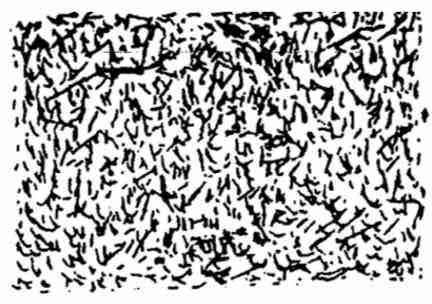
Try looking at the ‘snowy image’ above. Can you discern anything? Now consider these statements :
“Imagination is inside exponential space time events”
“We are in the midst of a high-frequency blossoming of interconnectedness that will give us access to the quantum soup itself ”
If you saw anything in the image (it’s just random-ish noise) then you might have also been receptive to the two statements (which are examples of PPBS).
“In conclusion, the tendency to go beyond the available data and infuse the world with illusory patterns is positively associated with the tendency to create and endorse meaning in superficially impressive, yet ultimately meaningless, pseudo-profound statements.”
See: Finding meaning in the clouds: Illusory pattern perception predicts receptivity to pseudo-profound bullshit in Judgment and Decision Making, Vol. 14, No. 2, March 2019, pp. 109-119. Supplementary material here.
BONUS for PPBS researchers : There are (at least) two online facilities which can generate PPBS for your experiments. See : wisdomofchopra.com and sebpearce.com
Research research by Martin Gardiner

Celebrating the Invention of Karaoke
CBS Sunday Morning celebrates the invention of karaoke—and the awarding, in 2004, of the Ig Nobel Peace Prize “for creating an entirely new way for people to tolerate each other”:
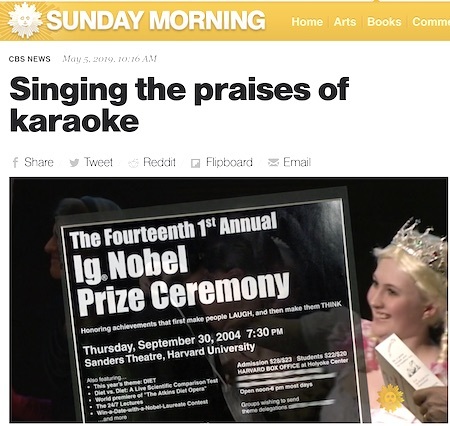
Inventions and Inventors, in Song and History
Karaoke is in many ways an invention of, by, and perhaps for the people. Since the awarding of that prize, in 2004, many people have claimed that they invented karaoke. And perhaps many, or even all of them, are correct. Many inventions have been invented, independently, by numerous people.
One could argue (and some people do argue) that the grandfather of karaoke is none other than Dr. Nakamats, Japan’s (and the world’s) (with more than 3500 patents, and counting. Dr. Nakamats is himself an Ig Nobel Prize winner. He was awarded the 2005 Ig Nobel Prize for nutrition, for photographing and retrospectively analyzing every meal he has consumed during a period of 34 years (and counting).
(For one of many good introductions to the work and life of Dr. Nakamats, see the movie “The Invention of Dr. Nakamats”, 2009.)

May 4, 2019
When would you like your Improbable Research Table Talks?
We are planning a new series of Improbable Research Table Talks—and we want your advice about when to schedule them!
These events will happen at Toscanini’s Ice Cream, in Cambridge Massachusetts, continuing the series we began last summer.
What: Laugh, then Think
At each Improbable Research Table Talk, Marc Abrahams (editor of the Annals of Improbable Research, and founder of the Ig Nobel Prize ceremony) will chat with you about one or another research study that makes people laugh, then think. Some of these studies have won Ig Nobel Prizes; others we have explored in the magazine, in the podcast, etc.
Gus Rancatore (co-founder of Toscanini’s, inventor of ice creams, scholar of many things great and small, and gatherer of intriguing persons and conversations) will co-host the Improbable Research Table Talks.
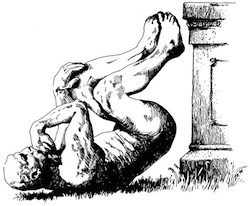 Cosy, Informal, Brief
Cosy, Informal, BriefThese chats will be cozy, informal, and brief, around a table. Sometimes Marc or Gus will bring along a professor, physician, engineer, or other famous or infamous researcher.
Please join us! Bring friends, and maybe meet some new friends.
The Question for You: When?
We want your advice. When—from your selfish point of view, for your personal delight—should these events happen? What day of the week would be most convenient for you? What time of day or evening?
If you have druthers, please get in touch with Marc or Gus, and tell us when would work best for you.

May 3, 2019
Opinion editor’s opinion: First make them laugh, then make them think”
‘One of my favorite quotes that guides my writing, by the creators of the Ig Nobel Peace prize, is “First make them laugh, then make them think.” It’s not enough that we simply feel a certain way about an issue.’
—Brianna Stanley, upon becoming the new opinions editor of the Kentucky Kernel, the University of Kentucky’s student newspaper

Validating Self-Reported Munchy-ism During Cannabis Intoxication
Some people who go to cannabis decriminalization advocacy events say, when questioned, that they do, when cannabisized, sometimes consume junk food:
 “Manipulation Checking the Munchies: Validating Self-Reported Dietary Behaviors during Cannabis Intoxication,” Jessica S. Kruger [pictured here], Alexis Blavos, Thomas S. Castor, Amy J. Wotring, Victoria R. Wagner-Greene, Tavis Glassman, Daniel J. Kruger, Human Ethology, Volume 34, 10-16, April 17, 2019, pp. 10-16. The authors, at SUNY at Buffalo, SUNY Cortland, the University of Toledo, and the University of Michigan, all in the USA, explain:
“Manipulation Checking the Munchies: Validating Self-Reported Dietary Behaviors during Cannabis Intoxication,” Jessica S. Kruger [pictured here], Alexis Blavos, Thomas S. Castor, Amy J. Wotring, Victoria R. Wagner-Greene, Tavis Glassman, Daniel J. Kruger, Human Ethology, Volume 34, 10-16, April 17, 2019, pp. 10-16. The authors, at SUNY at Buffalo, SUNY Cortland, the University of Toledo, and the University of Michigan, all in the USA, explain:
“The current study examined the relationship between self-reported dietary behaviors and food incentive choices among individuals intoxicated with cannabis. Participants at a cannabis decriminalization advocacy event completed brief surveys on cannabis use and dietary habits. Survey administrators offered an incentive choice of a food items; fruit and chips/crisps. Researchers documented choices of food incentives and three trained coders categorized self-reported dietary habits. Participants (N = 275) reported eating unhealthy food (77%)… Participants also reported eating more food when intoxicated with cannabis and being more likely to eat unhealthy food when intoxicated compared to at other times….”
Most of the people who were surveyed reported desiring more food. The people doing the survey report themselves desiring more research:
“Additional… research is needed to understand effective means of modifying unhealthy dietary choices made while intoxicated with cannabis.”
Go, Too
Some of the same authors earlier published the study “Pokémon GO: Healthy or Harmful?“, which may be only indirectly related to the new cannabis study.

May 2, 2019
Towards a Robo-Duck [study]
“The advancement in computer and drone applications is beyond human imagination, affecting and transforming the society, both structurally and socially. Exploitation of computer and drone technology is crucial to humankind in the futuristic world.”
– explains the website for the 2017 International Conference on Computer and Drone Applications (IConDA) which was held at the Damai Beach Resort, Kuching, Sarawak, Malaysia.
Nevertheless, human imagination does stretch to the concept* of a robo-duck. As has been demonstrated* by Saad Bin Abul Kashem, Mujahid Tabassum and Malcolm Chai of the Swinburne University of Technology, Sarawak, Malaysia, who have developed (the idea of *) an amphibious robot having webbed feet as duck.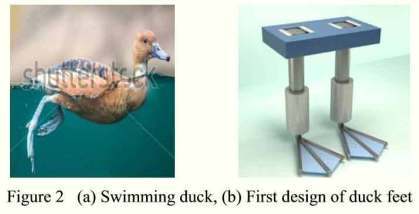
“A novel design of a duck-inspired amphibious robot is presented in this paper. Webbed feet inspired from the duck is used in the robot. The robot is able to swim, walk, and climb stairs using a single mechanism.”
They presented their findings on the subject at IconDA 2017. See:
‘A novel design of an amphibious robot having webbed feet as duck’
*Note that at this stage, it’s the concept that has been demonstrated, rather than a functioning robo-duck itself :
“In future work, we will test out the design by constructing a functioning prototype. The robot may be redesigned based on the results from the prototype.”
Also see: Ducks feet – the physics

Marc Abrahams's Blog
- Marc Abrahams's profile
- 14 followers



